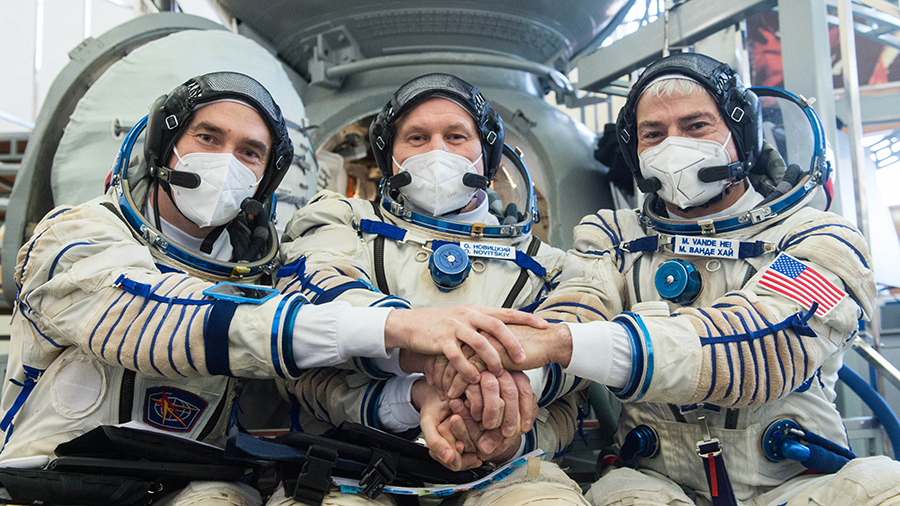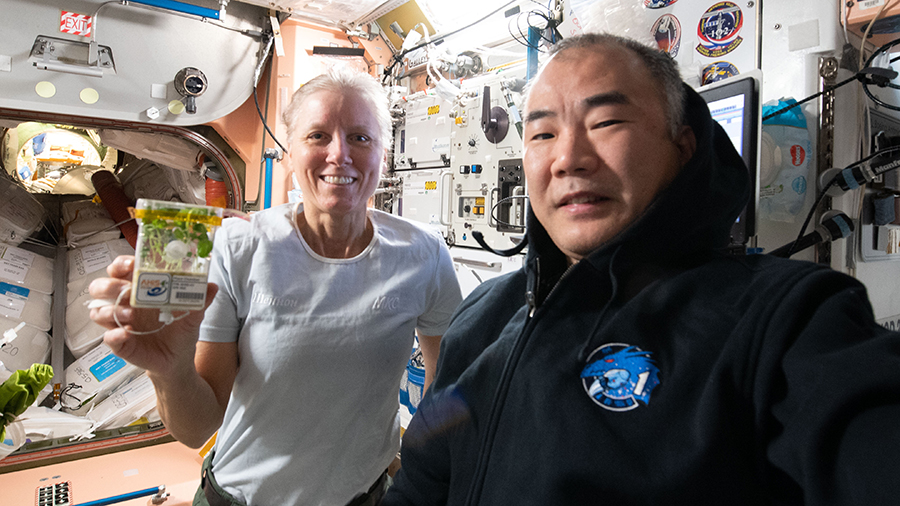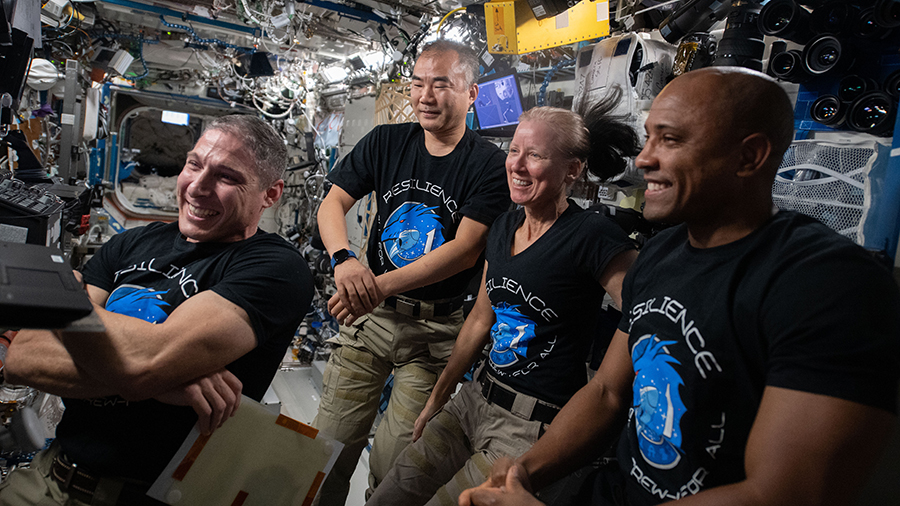Station Ends Week with Biology; New Crew Arrives at Launch Site

The seven residents aboard the International Space Station are wrapping up an intense week of biology investigations in low-Earth orbit. Three new crew members are also two weeks away from launching to the orbiting lab and joining the Expedition 64 crew.
The station astronauts have been focusing their research efforts this week on microgravity’s long-term impacts on the human body and other biological processes. NASA Flight Engineer Kate Rubins examined space-grown protein crystals in a microscope on Friday morning for insights into pharmaceutical production beyond Earth’s gravity. She later peered at microscopic worms wriggling in unique sample slides, set up by NASA Flight Engineer Shannon Walker, to understand how weightlessness affects genetic expression in muscles.
Flight Engineers Victor Glover and Soichi Noguchi partnered together in the ongoing Time Perception study inside Europe’s Columbus laboratory module. The astronauts wear virtual reality googles and click a trackball while performing a series of exercises to understand how their spatial orientation and cognitive performance changes in microgravity.
Lab maintenance is also critical to ensure station systems such as life support and computing remain in tip-top shape. Flight Engineer Michael Hopkins worked preventative maintenance in the Tranquility module’s Water Recycling System. He also replaced electrical components inside the Human Research Facility-2 rack.
The two cosmonauts, Commander Sergey Ryzhikov and Flight Engineer Sergey Kud-Sverchkov, kept up with their contingent of space research in the station’s Russian segment. Ryzhikov finalized this week’s plasma physics study closing out the experiment and stowing the advanced science gear. Kud-Sverchkov explored how the human circulatory system adapts to long-term spaceflight.
Three new Expedition 65 crew members have arrived at their launch site at the Baikonur Cosmodrome in Kazakhstan today. Flight Engineers Mark Vande Hei of NASA and Pyotr Dubrov of Roscosmos with Soyuz MS-18 Commander Oleg Novitskiy are in final training for their April 9 launch to the space station.
Mark Garcia
Powered by WPeMatico







